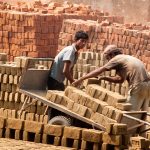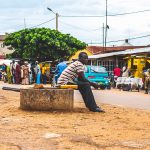Unemployment among young people is one of the most pressing social and economic problems facing less developed countries today. Data from the 2005 Kenya Integrated Household Budget Survey found that approximately 21% of youths are unemployed, and a further 25% are neither in school nor working. While the traditional academic schooling track offers large labour…
RCT
Assisting Job Search in Low-Employment Communities
Jobs are hard to find in Africa. Searching for jobs in African labour markets is expensive and time consuming. Job seekers, the young unemployed in particular, find it hard to be selected for the available positions. As a result, new employment opportunities are often not shared equally. Many economies in sub-Saharan Africa have achieved high…
Food Constraints and “Ganyu” Labour
Small-scale farming continues to be the principal source of employment and income for a majority of the population in low-income countries. Zambia is no exception: in 2008, 80% of employment was in agriculture. Even though Zambia has recently been re-classified as lower middle-income country primarily due to its large copper and cobalt exports, most Zambian…
Public Works Programs and Farm Household Behaviour
Public Works Programs (PWPs) are important tools for social protection. At the time of the beginning of the project, there were 167 PWPs in 29 sub-Saharan Africa. There are short-term and long-term PWPs. Short-term PWPs can stabilise consumption in response to individual or aggregate shocks. Long-term programs, on the other hand, are forms of insurance.…
Girls Empowered by Microfranchising
Integrating young adults into the formal labour market is a major challenge facing developing nations, particularly in Africa (World Bank 2007). High levels of unemployment, especially among youth, have led many policymakers to advocate microfinance (cf Yunus 1999) and other forms of credit market expansion aimed at promoting entrepreneurship. However, empirical evidence on the overall…
Reducing Extreme Poverty through Skill Training for Industry Job Placement
Bangladesh has been experiencing remarkable growth in the ready-made garments (RMG) industries for the last three decades. It has become an integral and major part of Bangladesh’s economy, which contributes 13 percent of GDP and 75 percent of export earnings. For instance, in 1983 there were some forty thousand people employed in the RMG sector;…
Empowering Women through Public Policy
In 2005, India’s Parliament passed the Mahatma Gandhi National Rural Employment Guarantee Act, a landmark in social protection legislation for the country. The Act moved employment into the domain of legally enforceable rights for a population no less than 120 million, making it the largest work/welfare programme in the world. Since 2009, the eponymous anti-poverty…
The Formal-Informal Labour Nexus and Growth
Although employment in low-income countries (LICs) is strikingly concentrated in the informal sector, the contribution of this sub-economy to the larger economy is not well understood. The traditional view holds that labour markets are segmented; the informal sector provides subsistence income, or a pool of surplus labour for the formal sector, and will likely disappear…
Women’s Access to Public Transport and Labour Force Participation
This project focuses on the labour market entry situation for women in Pakistan. Social norms against women coming into close contact with unrelated men and the discomfort social stigma and threat of possible harassment when they do so, restricts women’s use of public transport in urban areas of many countries, including in South Asia. This…
Asymmetric Information on the Skills of Workers and Matching in the Labour Market
Youth unemployment is a serious issue in developing countries, where around 60% of young people are currently unemployed or underemployed [ILO 2013]. Understanding the determinants of youth employment in LICs is thus highly policy relevant, not just for policies related to labour market functioning and attachment, but also for those debates related to the incentives…









